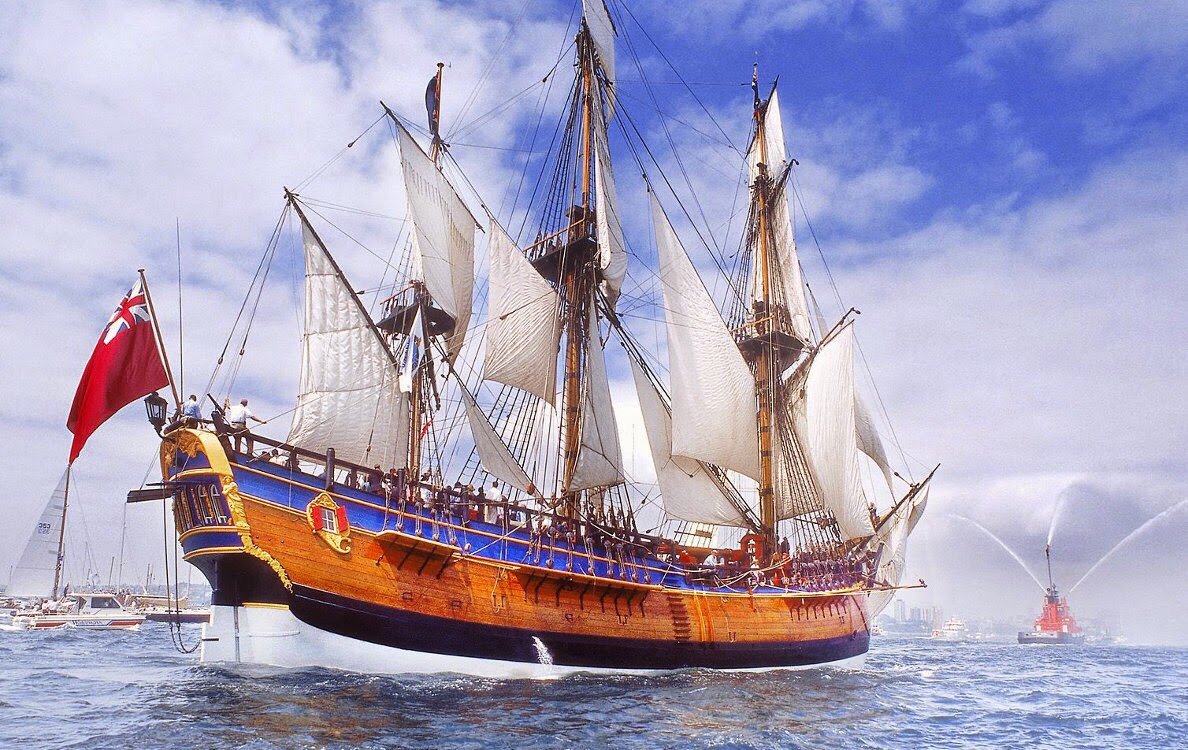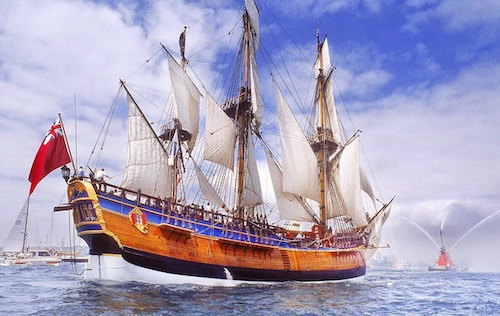
As part of the Sydney Maritime Museum, they have a replica of the HMS Endeavour which was the British Royal Navy research vessel that Lieutenant James Cook commanded on his first voyage of discovery, to Australia and New Zealand, from 1769 to 1771. The idea of recreating Endeavour for use as a museum ship was generated during the establishment of the Australian National Maritime Museum in the 1980s. A specialist shipyard, complete with viewing platform and guided tours for the public was set up, and construction of the vessel commenced in 1983. Due to financial problems the building had to stop but was finally completed by a private foundation. The Endeavour replica was launched at the end of 1993, and completed in 1994. After sea trials, the replica sailed from Fremantle to Sydney, where she arrived at the end of 1994. During 1995, the ship recreated Cook’s voyage along eastern Australia, then visited New Zealand at the end of the year. In late 1996, the Endeavour replica set out on a circumnavigation of the world, visiting ports in South Africa, the United Kingdom, and North America, before returning to New Zealand in late 1999. During 2011 and 2012, the replica circumnavigated Australia.
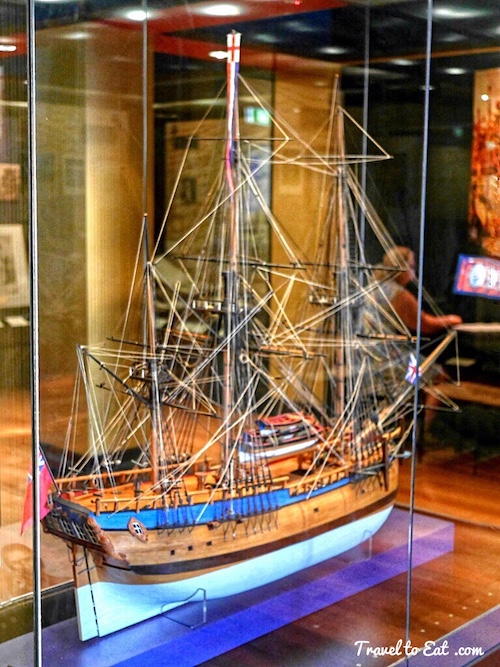
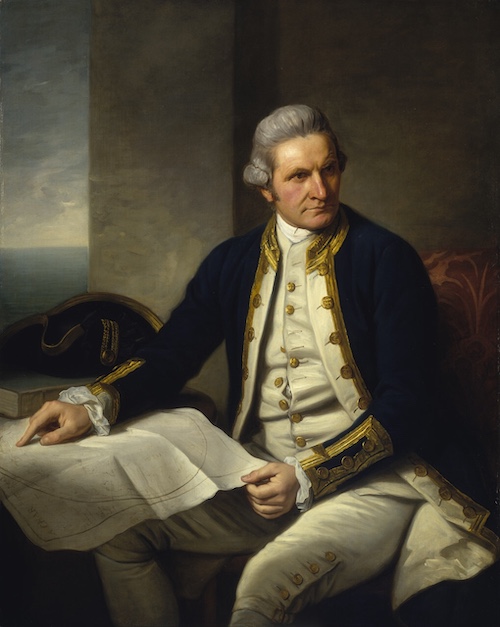
This model of Captain Cook’s famous ship “Endeavour” was created by model makers at the National Maritime Museum in London. It was presented as a gift from the government of Great Britain to the people of Australia by Queen Elizabeth II in 1970 on the 200th anniversary of Cook’s landing at Botany Bay. Built to transport coal and originally named the “Earl of Pembroke”, the vessel seemed an unlikely choice when purchased by the Royal Navy to carry a party of scientists to Tahiti to observe the 1769 transit of Venus. Just over 33 meters (108 feet) in length, the “Endeavour” was home for 92 men during Cook’s voyage around the world. As it happened, the collier proved an inspired choice. Strongly-built and with ample storage space to carry the stores and equipment required for a long voyage, the vessel’s flat bottom proved a godsend when it became necessary to repair the ship in the Endeavour River in north-eastern Australia.
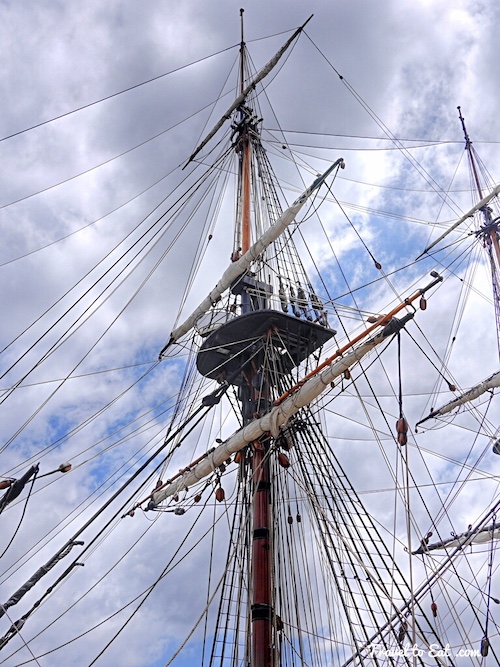
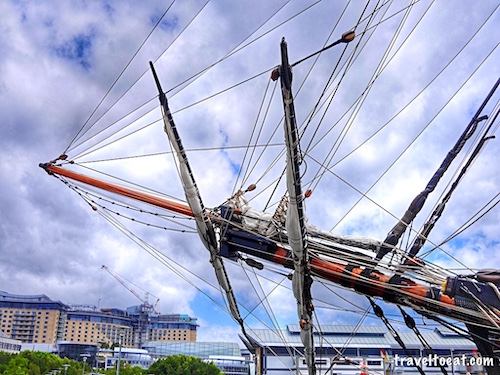
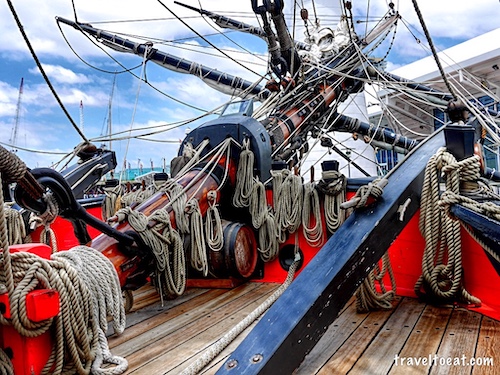
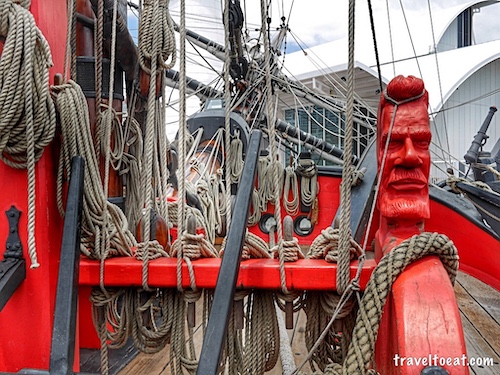

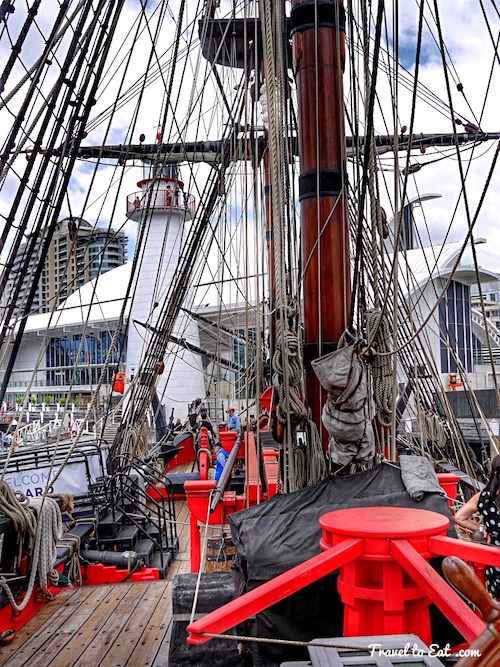
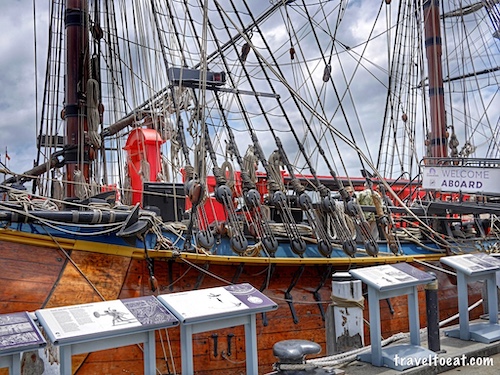
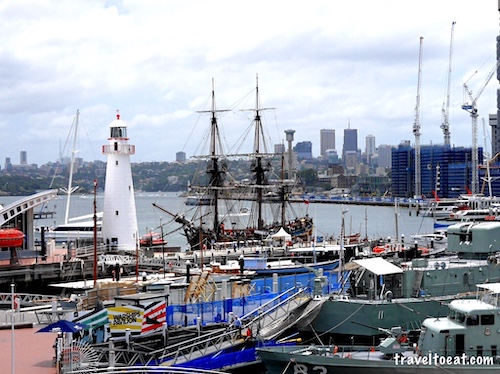
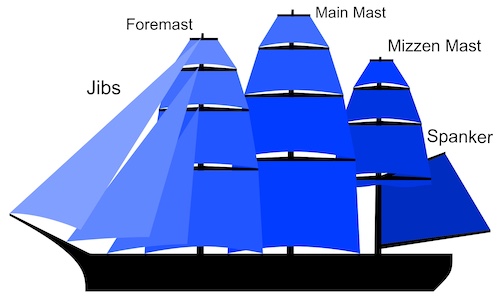
The first thing you notice when you board the ship is the tremendous amount of rope, or to use the nautical term, rigging. Just looking at the photos above, you can see that lines are coiled up just about everywhere. Naturally, which this much rope, additional cordage was kept down below. A full-rigged ship or fully rigged ship is a sailing vessel with three or more masts, all of them square-rigged. A full-rigged ship is said to have a ship rig or be ship-rigged. Alternatively, a full-rigged ship may be referred to by its function instead, as in collier or frigate, rather than being called a ship. In many languages the word frigate or frigate rig refers to a full-rigged ship. The masts of a full-rigged ship, from bow to stern, are: the Foremast (the second tallest mast), Mainmast (the tallest) and Mizzenmast (the third tallest). On each wooden mast the lowest piece is called the Mast or the lower, next the Topmast, above that the Topgallant mast and if fitted the top is the Royal mast. Jibs are carried forward of the foremast, are tacked down on the bowsprit or jib-boom and have varying naming conventions. One or two spankers are carried aft of the aftmost mast, if two they are called the upper spanker and lower spanker. All those sails have lines to raise and lower them and lines to orient them, hence the plethora of rope.
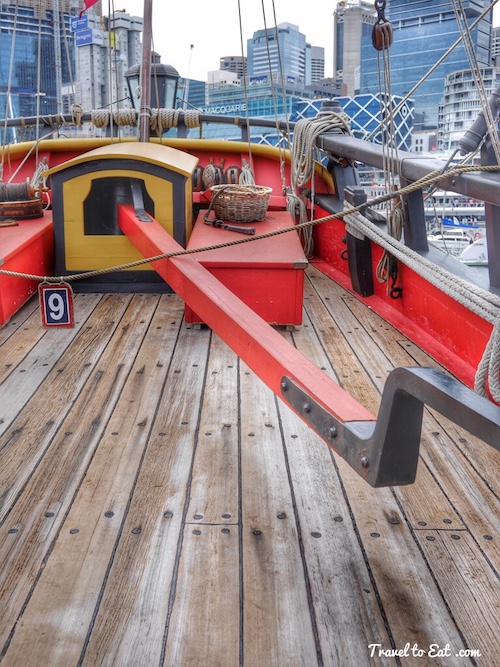
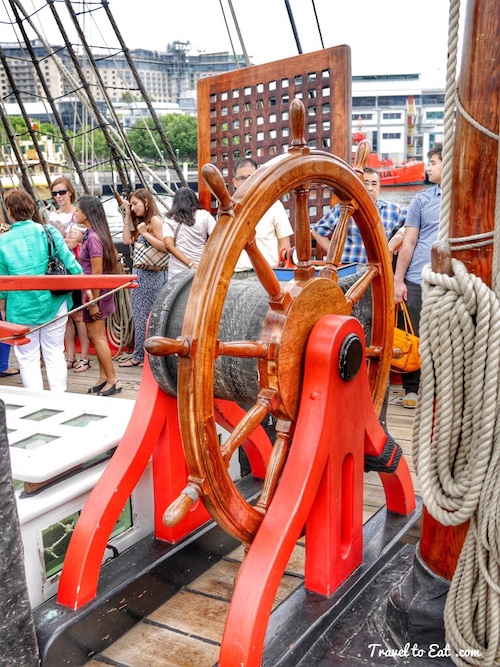
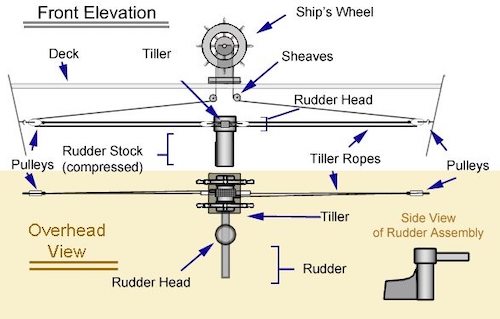
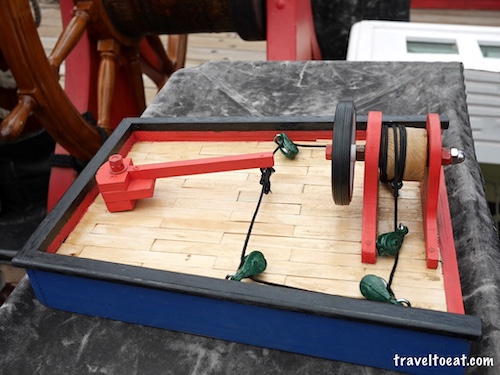
To steer the ship, a rudder is used, controlled by the ship’s wheel and a series of pullies. On such a large ship such as the Endeavour, two crewmen manned the wheel, one on each side.
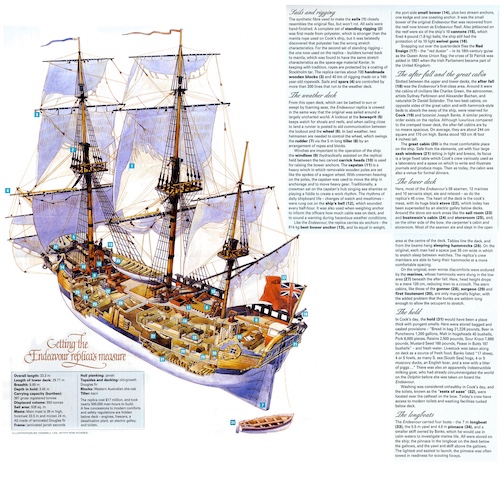
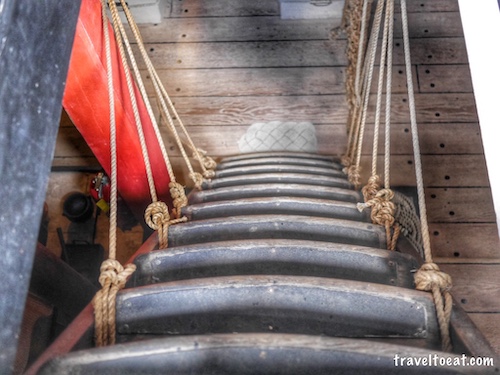
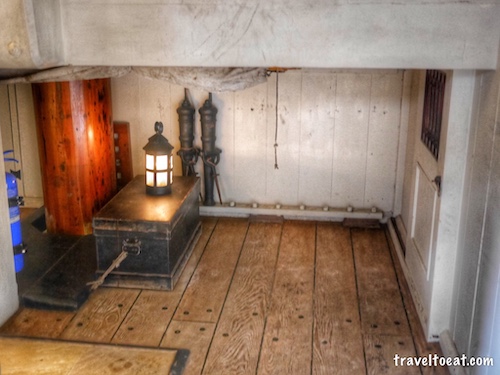
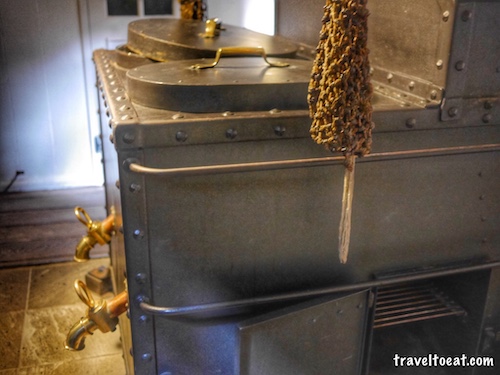
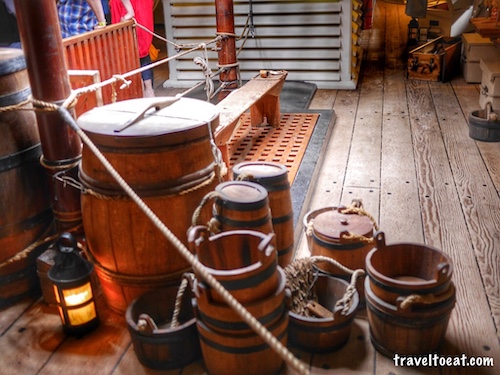
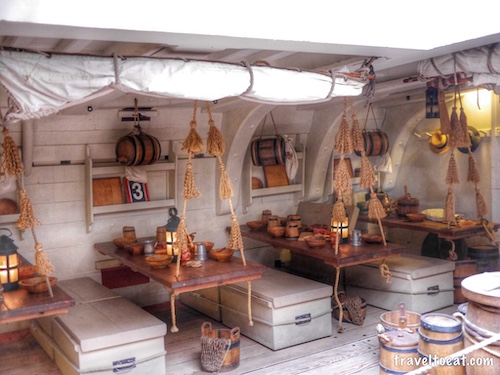

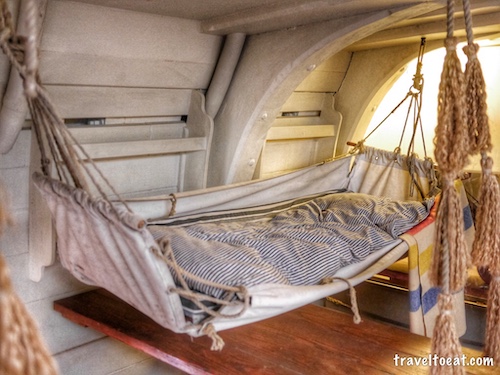
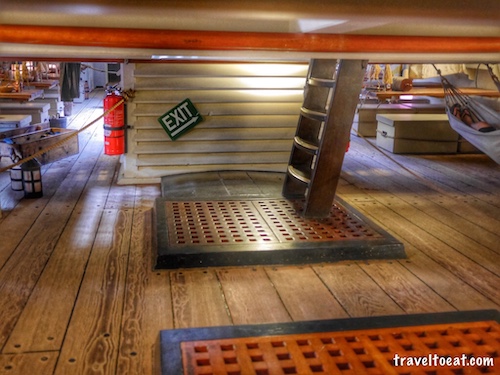

Below decks, the main area of congregation was the mess area where the crew ate and the cook created the meals. This was the only area where you could stand upright. The officers mess, captain’s quarters and additional sleeping areas were “half height” rooms where you had to bend over to enter. Notice the eating tables and the frayed ropes at the end of each table, which functioned as a place to wipe your hands after eating. The eating area functioned as additional bunk space when meals were not being served.
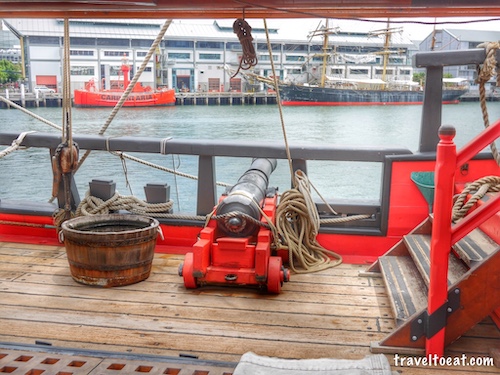
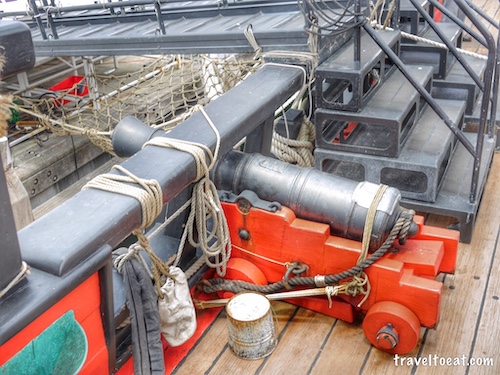
Our visit to the replica of the HMS Endeavor was very informative and really gave you a feel of what life aboard a ship in the 1700s would have been like. I personally found the below decks claustrophobic and I personally could never have survived. Nonetheless ships like this made the age of exploration possible and changed history. I hope you enjoyed it and please leave a comment.
[mappress mapid=”110″]
References:
Australian National Maritime Museum: http://www.anmm.gov.au/
Sail the Endeavour: http://www.anmm.gov.au/whats-on/vessels/sail-the-endeavour
Captain Cook: http://www.bbc.co.uk/history/historic_figures/cook_captain_james.shtml
Captain Cook Society: http://www.captaincooksociety.com/
Sailing Ships: http://sailing-ships.oktett.net/square-rigging.html
Masts and Sails: http://www.friesian.com/masts.htm

